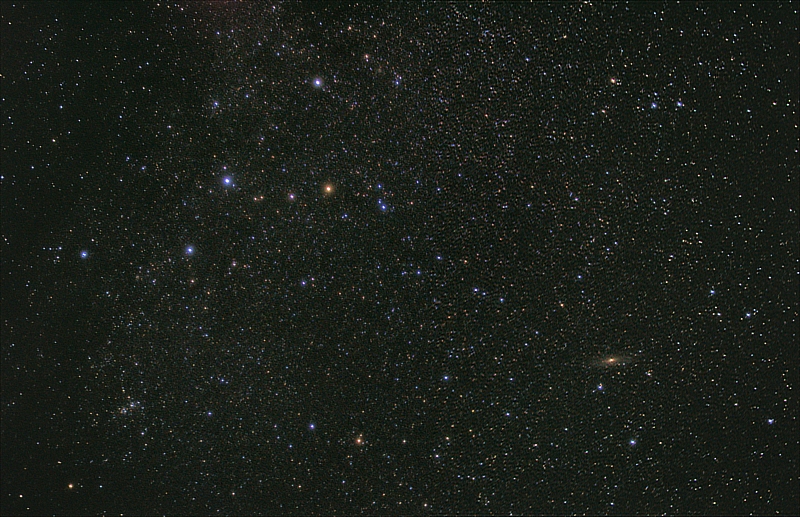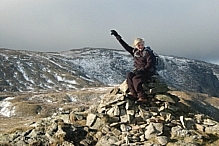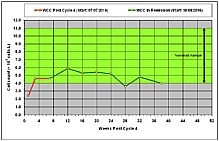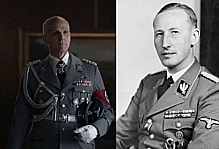I'd not planned to go out observing, but there was an hour or so of cloudless sky yesterday evening and I had a little time to spare. This was an opportunity to sky-test the Nikon AF-S DX NIKKOR 35mm f/1.8G lens to assess how well it is suited to taking widefield pics of the night sky.
In particular I was looking to see:
- how much sky would be captured in the frame;
- if a reasonable focus could be achieved using the camera's auto setting;
- how quickly the camera sensor would become saturated at f/1.8 and ISO 200;
- how much vignetting would be caused by using a 52-48mm step-down ring and Light-Pollution filter;
- how much coma would be present at the edges and corners of the image; and
- how much star-trailing would be caused when using a static tripod as opposed to using a driven equatorial mount.
The challenges would be to see if I could find a reasonable exposure time, get a small number of images for stacking, and then process-out the vignetting, star-trailing and any light-pollution.
Jupiter was in the southern sky so I pointed the camera at it to get the autofocus set. I then turned off the autofocus and fixed the position of the lens focus ring by the judicious application of duct-tape.
Next, I pointed the camera at the Cassiopeia / M31 Andromeda area and took a few test-frames of various durations. Eventually I settled on an exposure duration of 30 seconds and took 12 pics.
These were stacked in DSS and hurriedly processed in PSCS3, and here's the result:

Mouse-over the pic for details, click it for a bigger pic.
I have to say that I'm quite impressed with the raw images that this lens produced. Shooting with the aperture wide open captured a lot of light, and for a change I had to tone down the details rather than go through the usual routine of having to drag the details out of the murk. I'm damned if I can find any coma in the raw frames, which means that there'll be no need to crop off any bad areas. The expected vignetting was dealt with in PSCS3, the compensation isn't perfect but to be fair I've only done a quick fix, no doubt I could get it better if necessary. The amount of star-trailing was acceptable, and I'm confident that I could get it processed out if necessary and if I had enough time.
And the framing? I'm happy with it for targets the size of Cassiopeia, but the capture-area might be a tad small for meteor-work. Time will tell - between now and the end of the year there will be plenty of opportunities for snapping a few meteor trails (more on that in another post very soon (but don't hold your breath)).


















